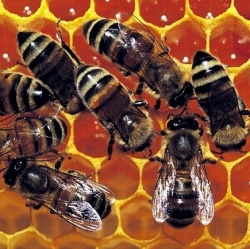
A scientist has tested the genetic effect of swapping baby sweet tempered European honeybees with aggressive African killer bees.
They took 250 of the youngest bees from each hive, and painted marks on the bees’ tiny backs.
Then they switched each set of newborns into the hive of the other subspecies.
He didn’t expect the bees’ actual DNA to change: Random mutations aside, genes generally don’t change during an organism’s lifetime. Rather, he suspected the bees’ genes would behave differently in their new homes—wildly differently.
This notion was both reasonable and radical. Scientists have known for decades that genes can vary their level of activity, as if controlled by dimmer switches. Most cells in your body contain every one of your 22,000 or so genes. But in any given cell at any given time, only a tiny percentage of those genes is active, sending out chemical messages that affect the activity of the cell. This variable gene activity, called gene expression, is how your body does most of its work.
Where he went out on a limb was in questioning the conventional wisdom that environment usually causes fairly limited changes in gene expression. It might sharply alter the activity of some genes, as happens in cancer or digestion. But in all but a few special cases, the thinking went, environment generally brightens or dims the activity of only a few genes at a time.
